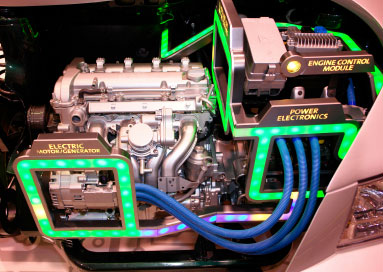
Efficient, Low-Noise Motor Drivers and Power Inverters
The fast switching that is an inherent part of efficient motor drives and power inverters produces a high amount of electrical noise. Imbalances in the switching circuitry, transmission path and load convert differential drive noise into common-mode currents that can be significant sources of broadband radiated emissions typically peaking around 30 - 60 MHz. These emissions can interfere with other electronic devices, especially devices that rely on wireless communications. The most common method of dealing with this form of electromagnetic interference is to apply extensive common-mode filtering. However, this filtering adds significantly to the cost and weight of a motor driver or power inverter and contributes nothing to the overall functionality or efficiency. A better approach is to actively enforce the electrical balance of the driver circuitry, while simultaneously compensating for imbalances in the transmission lines and load. Active balancing has the potential to drastically reduce electrical noise and to actually improve the overall efficiency of the power transfer. The potential cost and efficiency savings are roughly proportional to the power rating of the inverter. Clemson researchers are working with industry partners to develop active balancing techniques that will reduce the cost and improve the efficiency of a wide range of automotive power electronics. Publications

|
|
|